
Faculty of Applied Science and Technology (FAST)
Course Code:
Course Name:
ARCH 12356
Architectural Studio 1
 |
Faculty: |
Faculty of Applied Science and Technology (FAST) |
| School: | Architectural Technology | |
Course Code: Course Name: |
ARCH 12356 Architectural Studio 1 |
FREEHAND SKETCHING
 |
PAGE CONTENTS |
OBJECTIVES

"Salon of the Bulls at Lascaux" is approximately 20,000 years old.
The oldest cave paintings are 30-35,000 years old...
Humankind has been drawing for a long time...in fact we drew before we learned to build!
We have been drawing only 30 years with computers!
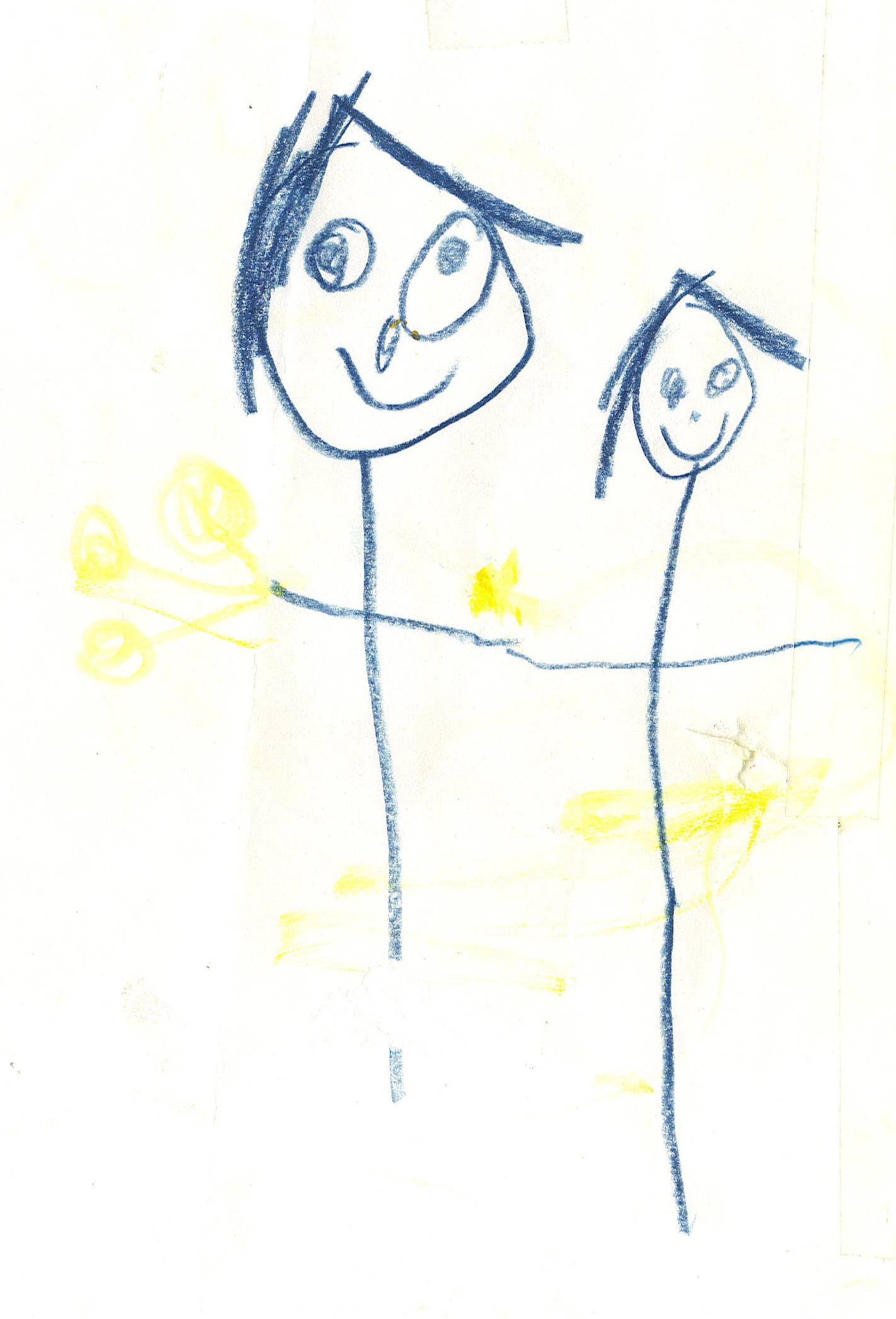 ...as children we DRAW BECAUSE WE BREATHE...
...as children we DRAW BECAUSE WE BREATHE...
...BUT...
Why do Architects Draw?
|
|
|
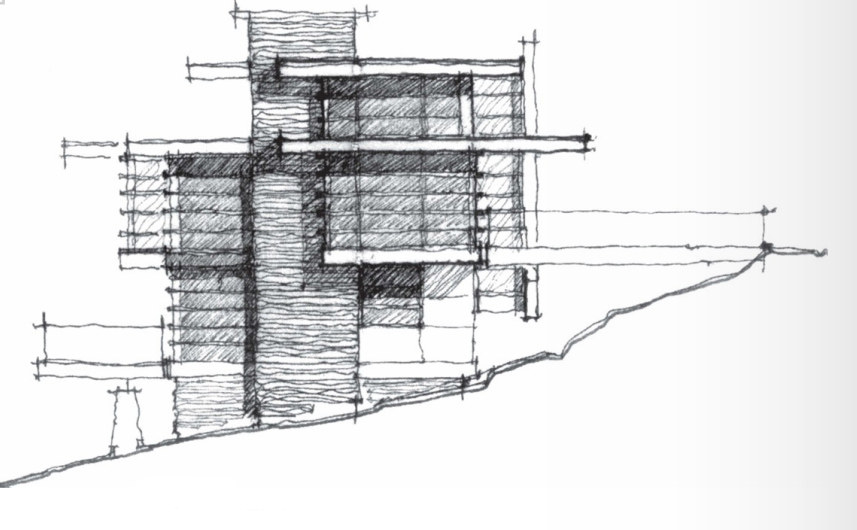 |
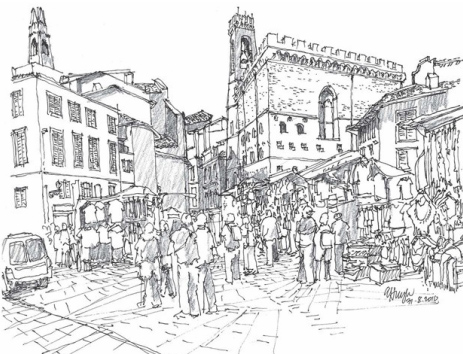 |
| Above drawing by Louis Belanger | Above drawing by Erol Hughes |
 |
...drawing is an interactive process of seeing, imagining and representing...F. D.K. Ching page 3.
seeing empowers our ability to draw.
imagining is a visual thinking process which involves a creative search for meaning and unless the images are captured, they may simply disappear.
we represent objects that are either there before us or exist only in our own minds. A drawing is our way of showing our ideas to the world. The trick is making the image conjured in the mind of a viewer match the image in the mind of the illustrator and have that match what is eventually built down the road!
...Improving our seeing helps place us more fully in the present moment, expanding our awareness...Ken Snell |
Emotive and Gestural sketches though artistic and creative will not be the thrust of this course.
4 Types of Architectural Sketches
Architectural line drawings as discussed and used in this course vary in size and complexity from simple lines to full blown renderings. Most emphasize proportion, shape, accuracy. Line work must be precise, clear, unambiguous to define edges and corners in a positive confident voice.
|
|
1. Schematic diagrams A. Simple memory aids a quick record of a thought a visual trick for understanding or solving a problem |
|
|
B. Bubble diagrams relationship diagrams that are visual translations of lists of requirements into a graphic form of interconnected bubbles for easier planning and manipulation C. Analysis diagrams visual shopping lists which organize and summarize complex verbal information as pictures locations and orientations
|
|
|
2.
Detail or Assembly drawings
show various materials and assemblies and components and how they come together. They assist in the calculation of dimensions, and help locate various architectural elements. |
|
|
3.
Concept drawings Characterized their explorative nature they describe an idea for a form, a layout or an organization of a building without a huge investment of time... tend to be "looser" (less accurate less complete) in nature than a formal presentation drawing. They seem less committed and often appear to have come out all at once... These drawing may be in proportion but not to scale. |
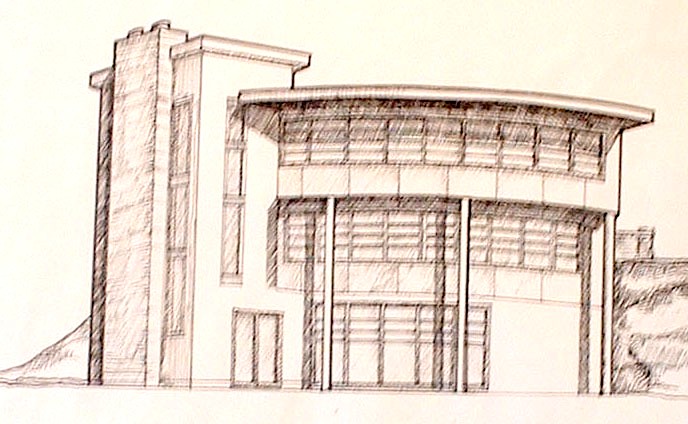 |
4. Architectural presentation
drawings The idea will be whole at this point...so they will be more complete and complex than concept drawings. They will be to scale and will show suggested materials, hatching, notes, tones, shading. Photo credit: Passive Solar home design by Paul De Souza Sheridan Grad |
|
|
Lines carry meaning in their quality, line weight, and visual characteristics, line type... The lines on the left vary in their inherent characteristics and therefore in their emotive qualities. Some are bold or timid, intermittent, wavy, ragged, jagged, broken, dotted. for line types see Ching page 15 for line weights see Ching page 16 for line quality see page 17 for tips on drawing quality lines see page 14 for freehand drawing see chapter 10 |
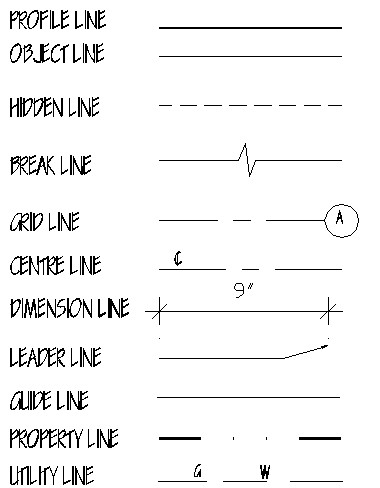 |
first learn the various line types then learn to draw quality lines, sharp crisp clear definitive. then will learn to vary their weight and characteristics to add visual interest and depth |